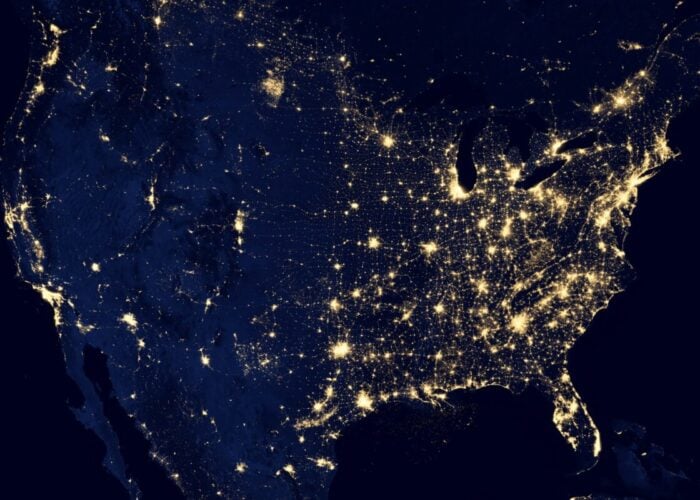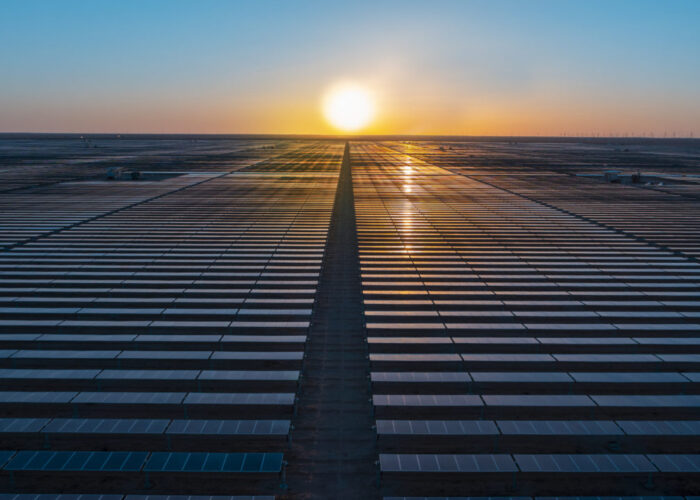“Better LCOE Powered by AI” was the theme as Huawei exhibited its all-scenario smart PV solutions for utility-scale plants and distributed applications at the World Future Energy Summit in Abu Dhabi earlier this year.
While on-site staff provided an in-depth introduction to its key products, Huawei’s director of smart PV for the Middle East and Africa, Ma Rui, spoke exclusively to PV Tech about the incorporation of artificial intelligence in solar PV, the firm’s growth in the MENA region and how competition in the sector can drive research and development.
Unlock unlimited access for 12 whole months of distinctive global analysis
Photovoltaics International is now included.
- Regular insight and analysis of the industry’s biggest developments
- In-depth interviews with the industry’s leading figures
- Unlimited digital access to the PV Tech Power journal catalogue
- Unlimited digital access to the Photovoltaics International journal catalogue
- Access to more than 1,000 technical papers
- Discounts on Solar Media’s portfolio of events, in-person and virtual
PV Tech: We’ve seen Huawei exhibiting some smart inverters with new AI features. How are they different?
Ma Rui: 2019 marked the beginning of the AI+PV era. Based on Huawei’s research and understanding of AI, we incorporated AI into the solar industry for the first time. With new features added to our solutions, the smart chip enables a transformation equivalent to that from a basic feature phone to a smart phone. That is to say, the power plant has become a power generation system with its own ‘thoughts’, instead of a mere electricity unit. For example, the all-round upgraded smart IV curve, powered by the self-learning technology of AI, can maintain records of all kinds of malfunctions, changing the traditional method of operation and maintenance.
Now, many EPCs and property owners prefer bifacial modules, which often perform in different ways under different ground and weather conditions which is very likely to cause a string mis-match. Available for intelligent integration with bifacial modules and trackers, Huawei’s AI powered inverters can maximize the power generation capacity of the modules through multi-MPPT and the self-learning optimized AI tracking algorithm.
The 300MW Sakaka project, Saudi Arabia’s first large scale ground-mounted plant, has adopted our 1500V smart PV solution. Since its connection to the grid last November, the plant has run stably, with PR up to a highest level of 92%. Its actual daily capacity in December outnumbered the PVsyst simulation by over 13%.
Huawei’s intelligent upgrade now allows inverters, usually the heart of a power plant, to act also like the brain of the arrays. Malfunctions can be found proactively by data collected and analyzed in smart ways, which profoundly increases the efficiency of maintenance. I think it’s a major contribution to the industry by Huawei.
PV Tech: How were Huawei’s inverter shipments to the Middle East and Africa in 2019?
Ma Rui: We’ve seen a huge growth in 2019. Our inverter shipments to the Middle East and African markets was around 1.3GW (overseas projects included), with nearly 1GW for plants and over 300MW for distributed projects. I believe we will make an even greater breakthrough in 2020.
The achievement owes much to our customer-centric concept, persistent innovation, and enormous investment in R&D. We invest more than 10% of our revenue into product R&D each year, even up to 15% in the last two years. We always ask ourselves what kind of products we should provide to our customers. Highly reliable products is the answer. Running stably, the products can save expenditure and also increase revenue by generating more power.
PV Tech: Why was Huawei also showing inverters for distributed and residential applications at the expo?
Ma Rui: Market volume of the distributed sector in some countries can be much bigger than we have expected. We have many low voltage grid-connection products for distributed projects. We are also looking forward to favourable policies from more countries to support distributed applications. We are more than willing, together with all stakeholders, to facilitate a positive development of the Middle East distributed PV market.
PV Tech: We all know that electricity prices in the Middle East are quite low and the competition keen. Does this mean a high demand for equipment cost control as well? And how does Huawei address such a requirement?
Ma Rui: The intense competition is a result of the business model of plants in the region. Here the electricity price is less than 0.017 US dollars per kWh, the lowest in the whole world, and it is likely to hit a lower level in the future. The electricity price, to an extent, has determined the ROI cycle and construction cost of a plant, demanding a very efficient equipment supply.
From our own perspective, we will keep optimizing the competitive edge and production cost of our products while, more importantly, reducing the LCOE of a plant within its life span by means of technological innovation, thereby creating more value for our customers. Innovation is a priority for the PV industry, especially cross-over innovation drawn from multiple industries that will bring tremendous value to the solar sector.
Huawei, as a company that started from information communication technology, is now a leading player in the ICT domain, while we have also invested years of effort in the electricity, electronics, energy and other traditional sectors. Huawei is the only company that holds such an advantageous position in all these fields. The combination of ICT and new energy technology sparks a new chemical reaction. Geared to the future, we are also working on a further integration of PV with new ICTs like 5G and AI, looking forward to bringing more value and business success to our customers.
With years of investment in the Middle East and Africa, our market reach, supported by our platforms, has been strengthened, as we respond promptly to customer needs and provide localized service support, which is also a source of competitiveness.
Also I think, against a broader vision, competition can facilitate development, as it demands high innovation and technology capability from a company to satisfy its customers. The large scale of plants here can boost the volume of equipment shipments, which brings along lower cost and more advanced technology. The industry sees prosperity in competition.
PV Tech: We’ve noticed some Huawei applications for off-grid solutions in Africa. Could you brief us about the African market?
Ma Rui: We have delivered off-grid projects in Cameroon, Nigeria and other African countries. Off-grid is welcomed in Africa, especially in those remote towns, due to a shortage of utility and a fragile power grid.
40-50MW, usually the capacity of a main-stream project in Africa, is a decent scale already, and the projects are quite scattered in localities. A handful of countries have plans for IPP projects, and we also anticipate more commercial plants.
With the improvement of the business environment and development cycle, the African market, in recent years, is drawing attention from international capital and investment firms. Countries have been acting proactively, some to attract capital with state guarantees. The African market can have bright prospects over the coming years.







